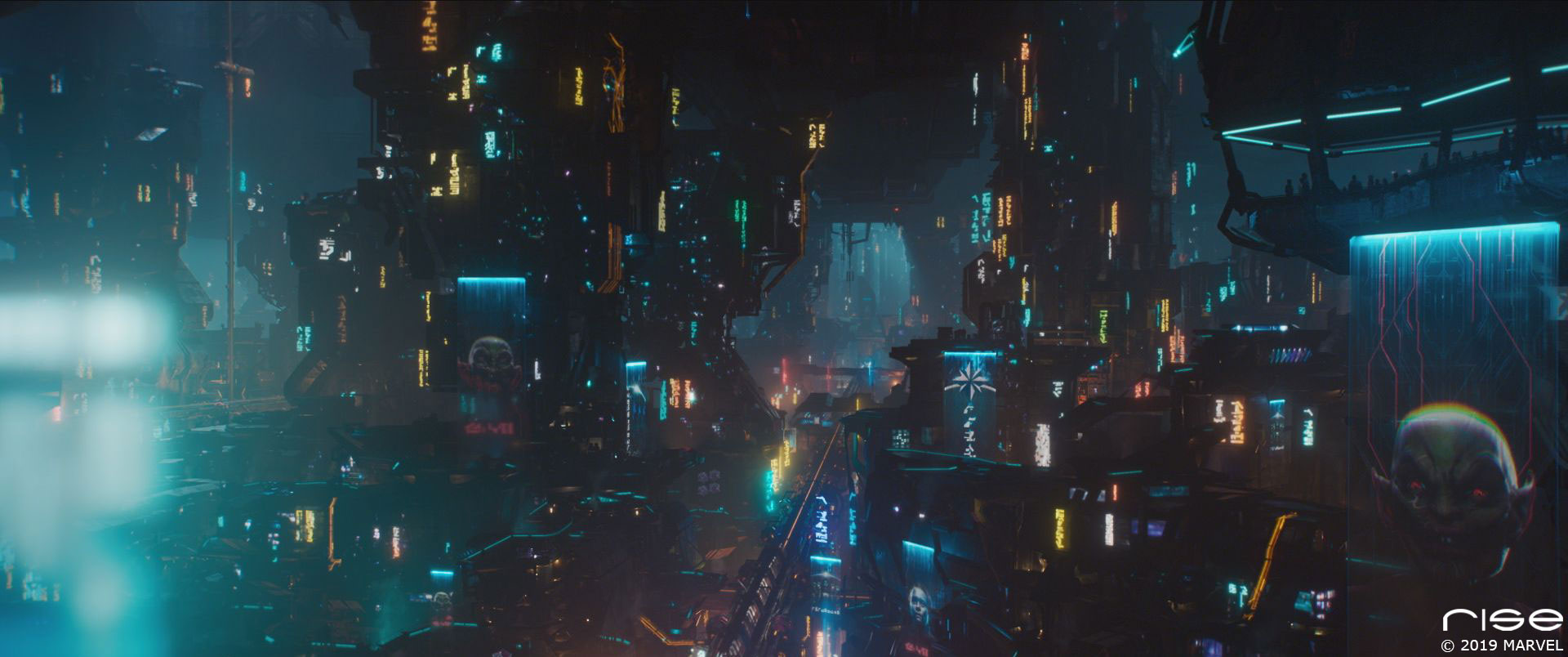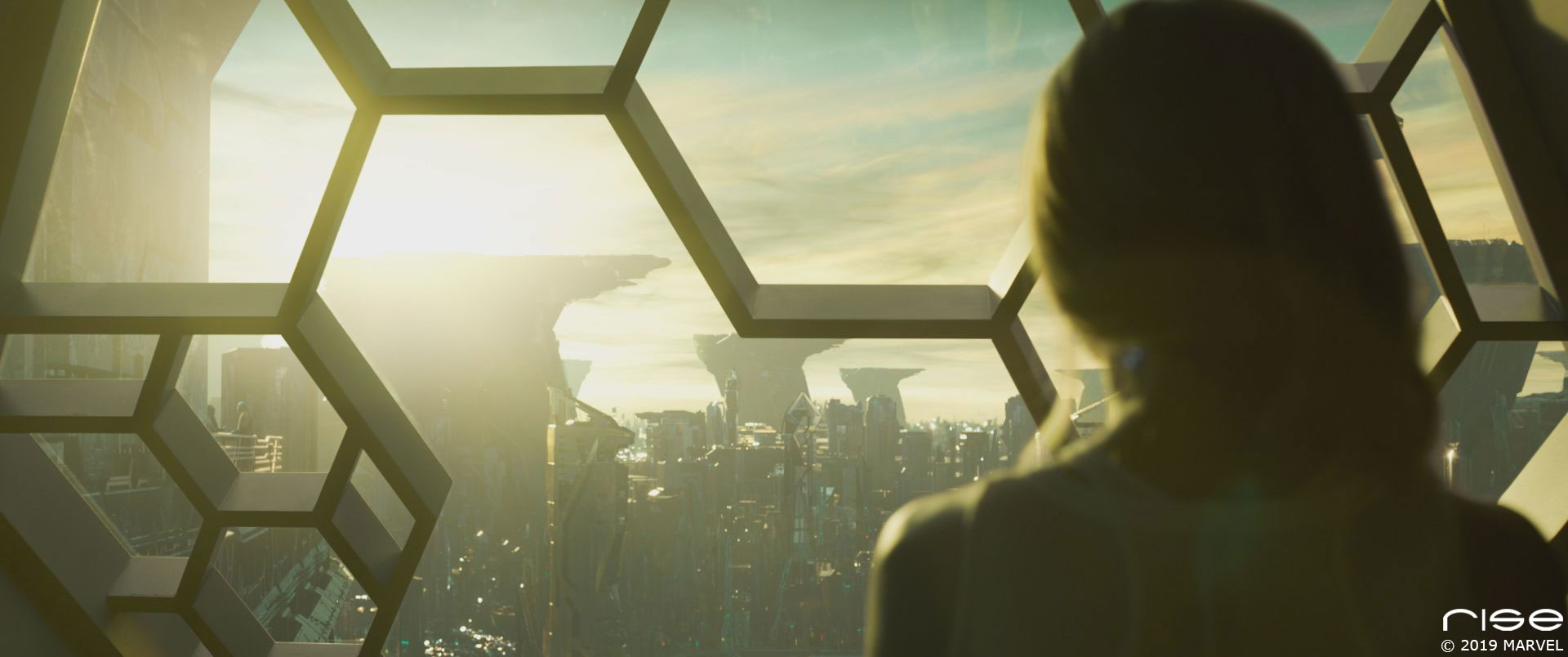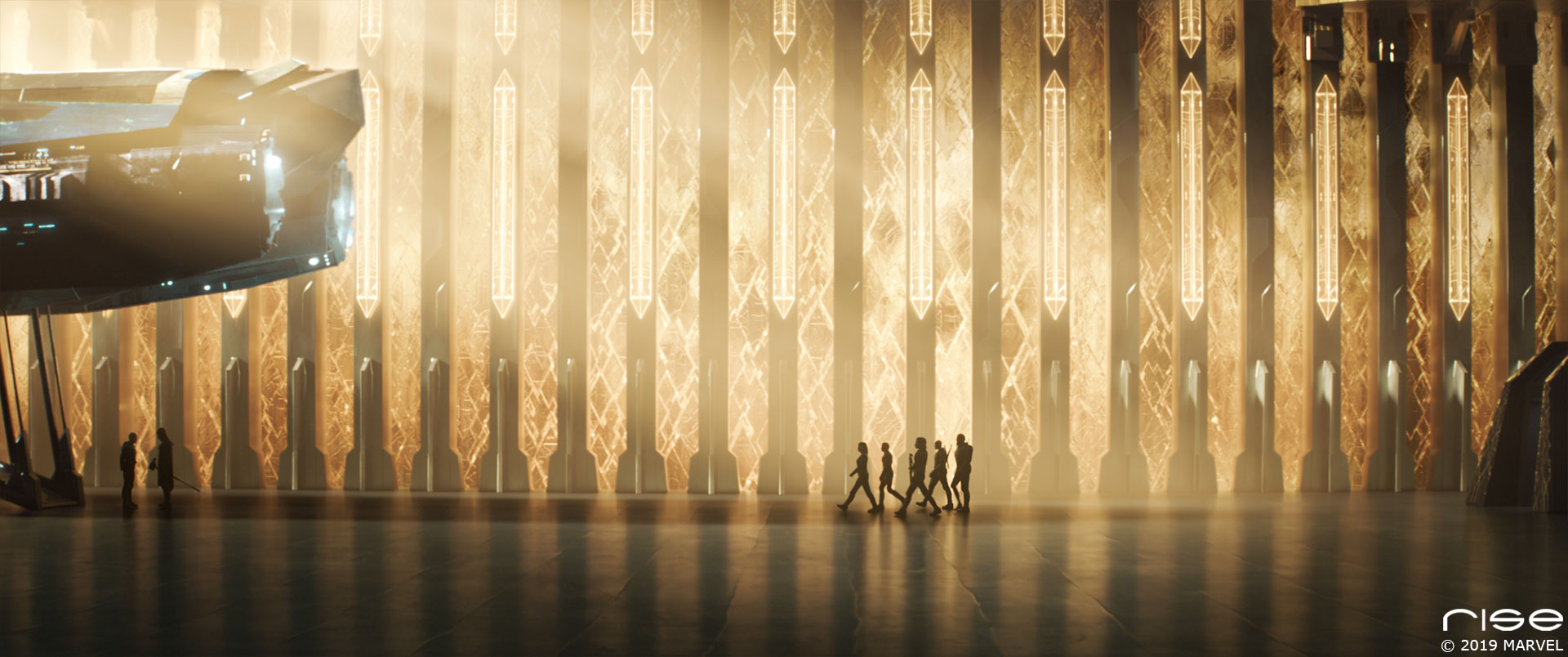In Captain Marvel - directed by Anna Boden and Ryan Fleck - we get to see the Kree Empire's capital planet of Hala, the home of Carol Danvers, aka Vers (Brie Larson). Hala is a planet made up almost entirely of one gigantic city, constructed for the film by RISE FX.
The German visual effects studio relied on its previous experience in crafting a number of cities with complex buildings and distinctive patterns to generate Hala using a Houdini workflow - utilizing several procedural techniques in doing so.
Watch the trailer for Captain Marvel.
Hala: The Brief
RISE FX worked with production visual effects supervisor Christopher Townsend and additional visual effects supervisor Janelle Croshaw Ralla in delivering the Hala shots. This began with concept artwork from Marvel to establish the look and feel of the city. The brief, in particular, called for two contrasting sections of the city, a lower-level one that was more gritty, and an upper-level section that was more plush and wealthy-looking.
“What they were after for Hala and all the effects in the film was to have that photographic quality, as if based on something real, and something you could just relate to,” outlines RISE FX visual effects supervisor Oliver Schulz. “On the other hand, there was always this thing that this enormous mega-city should look kind of alien with the patterns and materials they used and the lights everywhere.”

The lower level of Hala proved to be an incredibly complex lighting challenge for RISE FX.
Building Hala
With so many building pieces, repeating geometry and the need for fine detail, RISE FX set to work in building a city as efficiently as possible. The build process started with layout and animation in Maya, before moving into Houdini for asset shading, lighting and final rendering, which was done in Mantra.
For the upper part of the city, RISE FX crafted gross shapes based on the concept art. Background buildings were achieved with scattering tools. “We started with simple shapes first for the top level,” describes Schulz, “and then used procedural tools to generate the second level of detail required. We used these tools to do variations of building tops because that's what you see the most - just silhouettes, so there we just scattered stuff on the top buildings.”
You've got tons of lights...it's a nightmare in rendering. So we tried to make that as less complicated as we could, and we made use of the GI lighting in Houdini to just pre-bake all of the lighting information and GI caches, and then used that in the final rendering to speed up the process.
Oliver Schulz | Visual Effects Supervisor | RISE FXIt was the lower part of Hala that required greater detail, since these areas were intended to be a more messy-looking and worn. “Here we used our procedural tools when it came to material variation and color variation for the final rendering,” says Schulz. “For example, they had a lot of predefined patterns and we took those patterns and generated shaders out of it. And these were then procedurally applied in Houdini to different buildings randomly to just get that variation. So, all the details for windows and other things was actually created in shading, and that was all procedural.”
The lower part of the city proved particularly challenging, too, given it was almost like an indoor scene. “It's the worst indoor scene you can render, actually, because it's a really big environment!” notes Schulz.
“You've got tons of lights, like a lot of these neon lights, a lot of lights from the street level up, these orange glows, light shafts from the upper surface. And you've got volumes in almost every shot because you need to have those light shafts be visible. And so basically, it's a nightmare in rendering. So we tried to make that as less complicated as we could, and we made use of the GI lighting in Houdini to just pre-bake all of the lighting information and GI caches, and then used that in the final rendering to speed up the process.”

More distant views of Hala, or views outside windows, still made use of the 3D city buildings and procedural textures built by RISE FX.
Re-using city builds
Once RISE FX had built Hala, it became a relatively easy task to re-purpose parts of the city for other shots. These included scenes where buildings had to appear through windows, or even moments when the characters are in a transport moving through the underground parts of the city.
“We would start with our simple building structures that we could just place there,” says Schulz. “Then for most shots we just did the layout by hand to get interesting patterns you see out of the window. Then we would just run a pass on it to generate all that second-level detail on all those buildings. We’d take the height of one story of one building and with this height, we then generated geometries that were separating those levels visually. Then we generated the windows in between, then we generated geometries that separated different living rooms and things like that. So all these then were generated procedurally in Houdini.
“We also had tools to generate all the neon lightings on all those buildings. That's one of the major visual parts of the underground city is this neon lighting, actually - this was generated procedurally as well.”
“Initially,” admits Schulz, “I was a little bit scared because it's such a vast city and the sequence was a lot longer, originally. So, I thought, okay, that might be fun to just travel through the city and get all this through 3D. In the end, that was, 3D-wise, one of the less complicated sequences, really. We didn't have any problems with that workflow.”

RISE FX also worked on several shots for a Hela hangar for the film.
COMMENTS
Please log in to leave a comment.